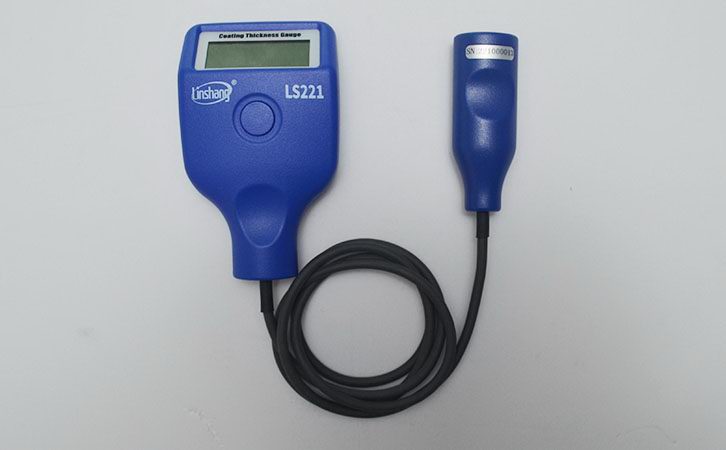Working Principle and Precautions of Painting Thickness Meter
To understand the painting thickness meter , we must first start with the basic working principle and measurement method of the painting thickness meter. At present, there are two types of painting thickness meters, handheld and desktop. Most of them are used for iron and aluminum, compatible with the principle of magnetic and eddy current.
The eddy current method is suitable for measuring the thickness of most anodized coatings. Using the electromagnetic field generated by the high-frequency alternating current in the coil, when the probe is in contact with the cover layer, an eddy current will be generated on the metal substrate. A feedback effect will be produced on the coil in the probe. By measuring the magnitude , we can know the thickness of the cover layer;
The magnetic method is suitable for the measurement of non-magnetic coatings on magnetic metal substrates. When the probe is in contact with the cover, the probe and the base of the magnetic metal form a closed magnetic circuit. Due to the presence of the non-magnetic cover, the magnetic resistance of the magnetic circuit changes. The thickness of the cover is derived by measuring the change.
The painting thickness meter has both magnetic measurement principle and eddy current measurement principle. Magnetic measurement is used to detect the thickness of non-magnetic coatings on magnetic metal substrates and eddy current measurement is used to detect the thickness of non-conductive coatings on non-magnetic substrates.
In order to use the painting thickness meter flexibly, it is not enough to master its working principle, but also to understand the precautions during use.
1. Zero calibration
Because the previous measurement parameters may affect the current measurement, optical calibration is required before each use of the painting thickness meter . Zero calibration can eliminate the influence of parameters in the previous measurement, reduce the error of the measurement result and make the measurement result more accurate.
2. Suitable substrate thickness
When using a painting thickness meter to measure an object, a substrate with a suitable thickness should be selected. Otherwise it will greatly affect the measurement accuracy of the instrument, cause inaccurate data results and affect the normal progress of the measurement process.
3. Surface roughness
The surface of the measured object should not be too rough, because the rough surface easily causes the test points of the probe to be different every time, resulting in unstable test data. Therefore, the surface of the measured object should be kept as smooth as possible to ensure the accuracy of the measurement results.
The painting thickness meter has a wide range of applications and rapid measurement, so it is widely used. We believe that through the above introduction about the painting thickness meter, it will definitely help us better use the painting thickness meter and improve work efficiency.
- High precision coating thickness gauge for used car
- Automotive paint protection films coating thickness gauge
- Plating Thickness Measuring Instrument for Detecting Anti-corrosion Coating
- Linshang LS220, LS191, LS160A– Necessary for Car Cover Inspection
- Coating Thickness Gauge for Second Hand Vehicle
- Zero Adjustment Step of Coating Thickness Gauge
